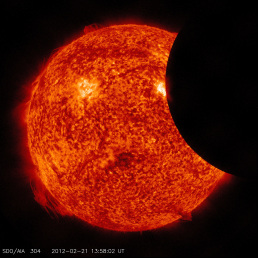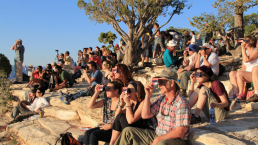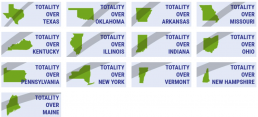Home Extension Eclipse Day Activity & Post-eclipse Data Literacy Activity


Take Home Eclipse Day ActivityES Observer Role
The lesson plans in the Observer Curriculum have been designed to help prepare students by equipping them with the scientific observation skills and vocabulary they will need to be Eclipse Soundscapes Observers. Now they are ready to participate as ES Observers. Below are two handouts to send home with your students to guide them in this activity:


To help take effective notes, we recommend using the Eclipse Soundscapes Field Notes handout on Eclipse day.















Post Eclipse Day - Data Literacy Classroom Activity
We hope you will encourage your students to submit their observations online to the Eclipse Soundscapes Project as it it is very valuable to the science of the eclipse soundscapes project! And, anyone who submits their observations will receive a downloadable ES Observer certificate!


One way to support your students in submitting their observations to the Eclipse Soundscapes project while also helping them improve practical web-form related data literacy skills is to add a post-eclipse ES Observer activity!
You could have your students bring their eclipse observation notes to school after the eclipse. Together you and your students could discuss their observations! Then your students could utilize their notes to fill out the online observation submission web form! All ES Observers should submit their observations on the ES Observer page.





ES Observers Under 13
ES Observers under 13 years old will not be asked for their name or email address. The latitude and longitude entry is optional for people under 13 and only allowed if completed with the guidance of an adult.
ACTIVITY FEEDBACK
We want to hear from you! If you used either of these activity ideas or any of these resources, please submit your feedback via a short survey!
September 20, 2023
Lesson Plan: Multi-sensory Observing


Lesson Plan:Multi-sensory Observing
Created in collaboration with Tracey Kline, Lynn Public Schools, Lynn, MA
Grades 6-8, CCSS.ELA-LITERACY.W.8.10
STANDARD
Common Core State Standards for English Language Arts & Literacy in History/Social Studies, Science, and Technical Subjects: CCSS.ELA-LITERACY.W.8.10 Write routinely over extended time frames (time for research, reflection, and revision) and shorter time frames (a single sitting or a day or two) for a range of discipline-specific tasks, purposes, and audiences.
LEARNING/ CONTENT/ LANGUAGE OBJECTIVE:
Students will be able to record observational science field notes in writing using multi-sensory observation skills.
LANGUAGE DEMAND:
Essential / Academic Vocabulary: observe/observation, multi-sensory, field journal + sensory vocabulary list
LESSON STRUCTURE
Lesson Beginning / Frame the Learning
(Clear entry routine, Do-Now, Activator, etc.; Frame the lesson by sharing and explaining lesson objective, agenda, and goals)
Differentiation
What supports and scaffolds am I providing based on the WIDA can-do descriptors?
![]()
![]()
![]()
![]()
![]()
![]()
![]()
![]()
![]()
![]()
![]()
![]()
![]()
![]()
![]()
![]()
![]()
![]()
![]()
![]()
![]()
![]()
![]()
![]()
![]()
![]()
![]()
![]()
![]()
![]()
![]()
- Link to Video: https://www.youtube.com/watch?v=wVyQ_8-k8Co
- Video in lesson slides provided in Lesson Resources below
![]()
![]()
![]()
![]()
![]()
![]()
![]()
![]()
![]()
![]()
![]()
![]()
![]()
![]()
![]()
![]()
![]()
![]()
![]()
![]()
![]()
![]()
![]()
![]()
![]()
![]()
![]()
![]()
![]()
![]()
![]()
![]()
![]()
![]()
![]()
![]()
![]()
![]()
![]()
![]()
![]()
![]()
![]()
![]()
![]()
![]()
- Provide word bank and sentence starters for students who need it.
Resource: WIDA can-do descriptors
Lesson Middle
(I do- teacher directed; We do- practice with the teacher; You do- partner/small group application with teacher support)
* Revisit language objective and agenda; formative assessment- check for understanding (intervention and extension opportunities available)
Differentiation
What supports and scaffolds am I providing based on the WIDA can-do descriptors?
![]()
![]()
![]()
![]()
![]()
![]()
![]()
![]()
![]()
![]()
![]()
![]()
![]()
![]()
![]()
![]()
![]()
![]()
![]()
![]()
![]()
![]()
![]()
![]()
![]()
![]()
![]()
![]()
![]()
![]()
![]()
- Link to video: https://youtu.be/93aMXg3GbdA
- Video in lesson slides provided in Lesson Resources below.
![]()
![]()
![]()
![]()
![]()
![]()
![]()
![]()
![]()
![]()
![]()
![]()
![]()
![]()
![]()
![]()
![]()
![]()
![]()
![]()
![]()
![]()
![]()
![]()
![]()
![]()
![]()
![]()
![]()
![]()
![]()
![]()
![]()
![]()
![]()
![]()
![]()
![]()
![]()
![]()
![]()
![]()
![]()
![]()
![]()
![]()
![]()
![]()
![]()
![]()
![]()
![]()
![]()
![]()
![]()
![]()
![]()
![]()
![]()
![]()
![]()
![]()
- Sensory vocabulary list provided in Lesson Resources below.
![]()
![]()
![]()
![]()
![]()
![]()
![]()
![]()
![]()
![]()
![]()
![]()
![]()
![]()
![]()
![]()
![]()
![]()
![]()
![]()
![]()
![]()
![]()
![]()
![]()
![]()
![]()
![]()
![]()
![]()
![]()
Student Directions:
- We will go outside as a class and stand/sit in one area near each other.
- Complete the 1 Observer journal together.
- Practice sharing observations for each of the categories using the Sensory Vocabulary List.
- Write notes
- Make 1-2 drawings in two categories of your choice.
- Then you will complete the 2nd Observer journal by yourself.
- Observer Journal Handout provide in Lesson Resources below.
![]()
![]()
![]()
![]()
![]()
![]()
![]()
![]()
![]()
![]()
![]()
![]()
![]()
![]()
![]()
![]()
![]()
![]()
![]()
![]()
![]()
![]()
![]()
![]()
![]()
![]()
![]()
![]()
![]()
![]()
![]()
- Resource Link: Google Maps to find latitude and longitude: https://eclipsesoundscapes.org/location-reporting-format/
![]()
![]()
![]()
![]()
![]()
![]()
![]()
![]()
![]()
![]()
![]()
![]()
![]()
![]()
![]()
![]()
![]()
![]()
![]()
![]()
![]()
![]()
![]()
![]()
![]()
![]()
![]()
![]()
![]()
![]()
![]()
![]()
![]()
![]()
![]()
![]()
![]()
![]()
![]()
![]()
![]()
![]()
![]()
![]()
![]()
![]()
Highlight specific words on the Sensory Vocabulary handout for students who may need extra support. By highlighting a smaller set of words, it allows students to focus their attention.
- Consider focusing on words that might already be in their vocabulary and cognates of their native language.
Resource: WIDA can-do descriptors
Lesson End
(You do- independent application; Summarize learning; Clear exit routine)
* Formative assessment-exit ticket, check for understanding, etc.
![]()
![]()
![]()
![]()
![]()
![]()
![]()
![]()
![]()
![]()
![]()
![]()
![]()
![]()
![]()
![]()
![]()
![]()
![]()
![]()
![]()
![]()
![]()
![]()
![]()
![]()
![]()
![]()
![]()
![]()
![]()
FORMATIVE ASSESSMENT
How am I measuring success? (Connection to your Content/ Language objective)
The teacher can measure student success by collecting field journal graphic organizers.
LESSON RESOURCES
- LINK TO Multi-sensory Observing LESSON PLAN (Google Doc): When you open this link you will be prompted to make a copy of the Google document. This will allow you to download, print, and/or edit the above lesson plan to best meet your needs.
- LINK TO Multi-sensory Observing SLIDES (Google Slides): When you open this link you will be prompted to make a copy of the Google slides. This will allow you to edit either of these slide options to best meet the needs of your classroom.
- LINK TO Sensory Vocabulary HANDOUT (Google Doc): When you open this link you will be prompted to make a copy of the Google document. This will allow you to download, print, and/edit the Google document to best meet the needs of your classroom.
- LINK TO Observer Field Journal HANDOUT (Google Doc): When you open this link you will be prompted to make a copy of the Google document. This will allow you to download, print, and/edit the Google document to best meet the needs of your classroom.
LESSON FEEDBACK
We want to hear from you! If you used this lesson plan or any of these resources, please submit lesson plan feedback via a short survey!
Lesson Plan: Nature during a Solar Eclipse


Lesson Plan:Nature During a Solar Eclipse
Created in collaboration with Tracey Kline, Lynn Public Schools, Lynn, MA
Grades 6-8, NGSS: MS-ESS1-1 Earth’s Place in the Universe
NGSS STANDARD
MS-ESS1-1: Develop and use a model of the Earth-Sun-Moon system to describe the cyclic patterns of lunar phases, eclipses of the sun and moon, and seasons. (Clarification Statement: Examples of models can be physical, graphical, or conceptual.)
LEARNING/ CONTENT/ LANGUAGE OBJECTIVE:
Predict
Students will be able to predict the sounds and sights in their location during the solar eclipse.
LANGUAGE DEMAND:
Essential / Academic Vocabulary: diurnal, nocturnal, camouflage
LESSON STRUCTURE
Lesson Beginning / Frame the Learning
(Clear entry routine, Do-Now, Activator, etc.; Frame the lesson by sharing and explaining lesson objective, agenda, and goals)
Differentiation
What supports and scaffolds am I providing based on the WIDA can-do descriptors?
![]()
![]()
![]()
![]()
![]()
![]()
![]()
![]()
![]()
![]()
![]()
![]()
![]()
![]()
![]()
![]()
![]()
![]()
![]()
![]()
![]()
![]()
![]()
![]()
![]()
![]()
![]()
![]()
![]()
![]()
![]()
- How would you observe animals or your environment during a solar eclipse using all of your senses?
- What would you listen for?
- What would you look for?
- What would you try to feel/touch?
- Recording the information you gather during your observations is important. How or where would you record your information during scientific investigation?
- Click Multi-sensory Eclipse Observations Do Now for videos.
- Lesson Slides provided in Lesson Resources below.
![]()
![]()
![]()
![]()
![]()
![]()
![]()
![]()
![]()
![]()
![]()
![]()
![]()
![]()
![]()
![]()
![]()
![]()
![]()
![]()
![]()
![]()
![]()
![]()
![]()
![]()
![]()
![]()
![]()
![]()
![]()
![]()
![]()
![]()
![]()
![]()
![]()
![]()
![]()
![]()
![]()
![]()
![]()
![]()
![]()
![]()
- Provide word bank and sentence starters for students who need it.
I would listen for …
I would look for…
I would try to feel/touch…
Reference: WIDA can-do descriptors
Lesson Middle
(I do- teacher directed; We do- practice with the teacher; You do- partner/small group application with teacher support)
Differentiation
What supports and scaffolds am I providing based on the WIDA can-do descriptors?
* Revisit language objective and agenda; formative assessment- check for understanding (intervention and extension opportunities available)
![]()
![]()
![]()
![]()
![]()
![]()
![]()
![]()
![]()
![]()
![]()
![]()
![]()
![]()
![]()
![]()
![]()
![]()
![]()
![]()
![]()
![]()
![]()
![]()
![]()
![]()
![]()
![]()
![]()
![]()
![]()
![]()
![]()
![]()
![]()
![]()
![]()
![]()
![]()
![]()
![]()
![]()
![]()
![]()
![]()
![]()
![]()
![]()
![]()
![]()
![]()
![]()
![]()
![]()
![]()
![]()
![]()
![]()
![]()
![]()
![]()
![]()
![]()
![]()
![]()
![]()
![]()
![]()
![]()
![]()
![]()
![]()
![]()
![]()
![]()
![]()
![]()
![]()
![]()
![]()
![]()
![]()
![]()
![]()
![]()
![]()
![]()
![]()
![]()
![]()
![]()
![]()
![]()
- Graphic Organizer provided in Lesson Resources below.
![]()
![]()
![]()
![]()
![]()
![]()
![]()
![]()
![]()
![]()
![]()
![]()
![]()
![]()
![]()
![]()
![]()
![]()
![]()
![]()
![]()
![]()
![]()
![]()
![]()
![]()
![]()
![]()
![]()
![]()
![]()
![]()
![]()
![]()
![]()
![]()
![]()
![]()
![]()
![]()
![]()
![]()
![]()
![]()
![]()
![]()
![]()
![]()
![]()
![]()
![]()
![]()
![]()
![]()
![]()
![]()
![]()
![]()
![]()
![]()
![]()
![]()
- Research & Predict Handout provided in Lesson Resources below.
![]()
![]()
![]()
![]()
![]()
![]()
![]()
![]()
![]()
![]()
![]()
![]()
![]()
![]()
![]()
![]()
![]()
![]()
![]()
![]()
![]()
![]()
![]()
![]()
![]()
![]()
![]()
![]()
![]()
![]()
![]()
![]()
![]()
![]()
![]()
![]()
![]()
![]()
![]()
![]()
![]()
![]()
![]()
![]()
![]()
![]()
![]()
![]()
![]()
![]()
![]()
![]()
![]()
![]()
![]()
![]()
![]()
![]()
![]()
![]()
![]()
![]()
![]()
![]()
![]()
![]()
![]()
![]()
![]()
![]()
![]()
![]()
![]()
![]()
![]()
![]()
![]()
- Partner earlier proficient ELs with later proficient ELs or native English speakers.
![]()
![]()
![]()
![]()
![]()
![]()
![]()
![]()
![]()
![]()
![]()
![]()
![]()
![]()
![]()
- have students draw a picture of each animal and plant and label/list what they see.
![]()
![]()
![]()
![]()
![]()
![]()
![]()
![]()
![]()
![]()
![]()
![]()
![]()
![]()
![]()
- Provide Sentence Starters
- The ___ has ___ ___ , ___ ___, and ___ ___.
- It sounds like a ______ .
Yes, it surprised me. OR No, it didn’t surprise me. - I think it would be easy to see a ___ because _______________ OR I don’t think it would be easy to see a ___ because _____________________ . I think it would be easy to hear a ___ because __________ OR I don’t think it would be easy to hear a ___ because __________ .
- During the eclipse I think a ___ might __________ .
Reference: WIDA can-do descriptors
Lesson End
(You do- independent application; Summarize learning; Clear exit routine)
Differentiation
What supports and scaffolds am I providing based on the WIDA can-do descriptors?
* Formative assessment-exit ticket, check for understanding, etc.
![]()
![]()
![]()
![]()
![]()
![]()
![]()
![]()
![]()
![]()
![]()
![]()
![]()
![]()
![]()
![]()
![]()
![]()
![]()
![]()
![]()
![]()
![]()
![]()
![]()
![]()
![]()
![]()
![]()
![]()
![]()
![]()
![]()
![]()
![]()
![]()
![]()
![]()
![]()
![]()
![]()
![]()
![]()
![]()
![]()
![]()
- Provide Sentence Starter
I think a ___ will _______ because _______ .
Reference: WIDA can-do descriptors
FORMATIVE ASSESSMENT
How am I measuring success? (Connection to your Content/ Language objective)
- Teacher can measure student success by checking students’ research handouts for accurate information.
- Teacher can measure student success by looking over students’ predictions and checking for predictions that are possible.
LESSON RESOURCES
- Nature During a Solar Eclipse LESSON PLAN (Google Doc): When you open this link you will be prompted to make a copy of the Google document. This will allow you to download, print, and/or edit the above lesson plan to best meet your needs.
- Nature During a Solar Eclipse SLIDES (Google Slides): When you open this link you will be prompted to make a copy of the Google slides. This will allow you to use and edit the lesson slides to best meet the needs of your classroom.
- Nature During a Solar Eclipse Brainstorm Notes Graphic Organizer HANDOUT (Google Doc): When you open this link you will be prompted to make a copy of the Google document. This will allow you to download, print, and/edit the Google document to best meet the needs of your classroom.
- Nature During a Solar Eclipse Research & Predict Activity HANDOUT (Google Doc): When you open this link you will be prompted to make a copy of the Google document. This will allow you to download, print, and/edit the Google document to best meet the needs of your classroom.
LESSON FEEDBACK
We want to hear from you! If you used this lesson plan or any of these resources, please submit lesson plan feedback via a short survey!
Lesson Plan: TEMPLATE


Lesson Plan:What is a solar eclipse?
Created in collaboration with Tracey Kline, Lynn Public Schools, Lynn, MA
Grades 6-8, NGSS: MS-ESS1-1 Earth’s Place in the Universe
NGSS STANDARD
LEARNING/ CONTENT/ LANGUAGE OBJECTIVE:
LANGUAGE DEMAND:
Essential / Academic Vocabulary:
LESSON STRUCTURE
Lesson Beginning / Frame the Learning
(Clear entry routine, Do-Now, Activator, etc.; Frame the lesson by sharing and explaining lesson objective, agenda, and goals)
Differentiation
What supports and scaffolds am I providing based on the WIDA can-do descriptors?
![]()
![]()
![]()
![]()
![]()
![]()
![]()
![]()
![]()
![]()
![]()
![]()
![]()
![]()
![]()
![]()
![]()
![]()
![]()
![]()
![]()
![]()
![]()
![]()
![]()
![]()
![]()
![]()
![]()
![]()
![]()
![]()
![]()
![]()
![]()
![]()
![]()
![]()
![]()
![]()
![]()
![]()
![]()
![]()
![]()
![]()
![]()
![]()
![]()
![]()
![]()
![]()
![]()
![]()
![]()
![]()
![]()
![]()
![]()
![]()
![]()
![]()
![]()
![]()
![]()
![]()
![]()
![]()
![]()
![]()
![]()
![]()
![]()
![]()
![]()
![]()
![]()
- Provide word bank and sentence starters for students who need it.
Resource: WIDA can-do descriptors
Lesson Middle
(I do- teacher directed; We do- practice with the teacher; You do- partner/small group application with teacher support)
* Revisit language objective and agenda; formative assessment- check for understanding (intervention and extension opportunities available)
Differentiation
What supports and scaffolds am I providing based on the WIDA can-do descriptors?
![]()
![]()
![]()
![]()
![]()
![]()
![]()
![]()
![]()
![]()
![]()
![]()
![]()
![]()
![]()
![]()
![]()
![]()
![]()
![]()
![]()
![]()
![]()
![]()
![]()
![]()
![]()
![]()
![]()
![]()
![]()
![]()
![]()
![]()
![]()
![]()
![]()
![]()
![]()
![]()
![]()
![]()
![]()
![]()
![]()
![]()
![]()
![]()
![]()
![]()
![]()
![]()
![]()
![]()
![]()
![]()
![]()
![]()
![]()
![]()
![]()
![]()
![]()
![]()
![]()
![]()
![]()
![]()
![]()
![]()
![]()
![]()
![]()
![]()
![]()
![]()
![]()
![]()
![]()
![]()
![]()
![]()
![]()
![]()
![]()
![]()
![]()
![]()
![]()
![]()
![]()
![]()
![]()
![]()
![]()
![]()
![]()
![]()
![]()
![]()
![]()
![]()
![]()
![]()
![]()
![]()
![]()
![]()
Pairing strategy: Partner earlier proficient ELs with later proficient ELs or native English speakers.
![]()
![]()
![]()
![]()
![]()
![]()
![]()
![]()
![]()
![]()
![]()
![]()
![]()
![]()
![]()
Resource: WIDA can-do descriptors
Lesson End
(You do- independent application; Summarize learning; Clear exit routine)
* Formative assessment-exit ticket, check for understanding, etc.
Differentiation
What supports and scaffolds am I providing based on the WIDA can-do descriptors?
![]()
![]()
![]()
![]()
![]()
![]()
![]()
![]()
![]()
![]()
![]()
![]()
![]()
![]()
![]()
![]()
![]()
![]()
![]()
![]()
![]()
![]()
![]()
![]()
![]()
![]()
![]()
![]()
![]()
![]()
![]()
![]()
![]()
![]()
![]()
![]()
![]()
![]()
![]()
![]()
![]()
![]()
![]()
![]()
![]()
![]()
FORMATIVE ASSESSMENT
How am I measuring success? (Connection to your Content/ Language objective)
LESSON RESOURCES
- LINK TO LESSON PLAN (Google Doc): When you open this link you will be prompted to make a copy of the Google document. This will allow you to download, print, and/or edit the above lesson plan to best meet your needs.
- LINK TO SLIDES (Google Slides): When you open this link you will be prompted to make a copy of the Google slides. This will allow you to edit either of these slide options to best meet the needs of your classroom.
- LINK TO HANDOUT (Google Doc): When you open this link you will be prompted to make a copy of the Google document. This will allow you to download, print, and/edit the Google document to best meet the needs of your classroom.
Lesson Plan: What is a Solar Eclipse


Lesson Plan:What is a solar eclipse?
Created in collaboration with Tracey Kline, Lynn Public Schools, Lynn, MA
Grades 6-8, NGSS: MS-ESS1-1 Earth’s Place in the Universe
NGSS STANDARD
MS-ESS1-1: Develop and use a model of the Earth-Sun-Moon system to describe the cyclic patterns of lunar phases, eclipses of the sun and moon, and seasons. (Clarification Statement: Examples of models can be physical, graphical, or conceptual.)
LEARNING/ CONTENT/ LANGUAGE OBJECTIVE:
Students will be able to describe what a solar eclipse is in writing using a diagram.
LANGUAGE DEMAND:
Essential / Academic Vocabulary: solar eclipse, cosmic chance, orbit, shadow
LESSON STRUCTURE
Beginning / Frame the Learning
Middle
End
(clear entry routine, Do-Now, Activator, etc.; frame the lesson by sharing and explaining lesson objective, agenda, and goals)
(I do- teacher directed; we do- practice with the teacher; you do- partner/small group application with teacher support)
(you do- independent application; summarize learning; clear exit routine)
![]()
![]()
![]()
![]()
![]()
![]()
![]()
![]()
![]()
![]()
![]()
![]()
![]()
![]()
![]()
![]()
![]()
![]()
![]()
![]()
![]()
![]()
![]()
![]()
![]()
![]()
![]()
![]()
![]()
![]()
![]()
Look at the diagram and write down 3-5 sentences and/or questions.
- Teacher will provide a diagram of a solar eclipse without it being labeled a solar eclipse.
- Have students share some of their thoughts on the diagram with the whole class and write them down on chart paper.
- Diagram provided in Lesson Resources below.
![]()
![]()
![]()
![]()
![]()
![]()
![]()
![]()
![]()
![]()
![]()
![]()
![]()
![]()
![]()
![]()
![]()
![]()
![]()
![]()
![]()
![]()
![]()
![]()
![]()
![]()
![]()
![]()
![]()
![]()
![]()
* Revisit language objective and agenda; formative assessment- check for understanding (intervention and extension opportunities available)
![]()
![]()
![]()
![]()
![]()
![]()
![]()
![]()
![]()
![]()
![]()
![]()
![]()
![]()
![]()
![]()
![]()
![]()
![]()
![]()
![]()
![]()
![]()
![]()
![]()
![]()
![]()
![]()
![]()
![]()
![]()
- Teacher shows a 1 minute video clip to students that describes what a solar eclipse is and why they occur. Teacher should stop and explain when needed throughout the video.
- Read text with the whole class. Teacher should stop and explain when needed.
- Video clip and text provided in Lesson Resources below.
![]()
![]()
![]()
![]()
![]()
![]()
![]()
![]()
![]()
![]()
![]()
![]()
![]()
![]()
![]()
![]()
![]()
![]()
![]()
![]()
![]()
![]()
![]()
![]()
![]()
![]()
![]()
![]()
![]()
![]()
![]()
- In pairs, students will complete two-column notes using the reading. They work together, but must each write the notes so they each have a copy.
- Two Column Notes provided in Lesson Resources below.
- Teacher should collect the reading from the students before the “You do” activity. The students should keep their notes.
* Formative assessment-exit ticket, check for understanding, etc.
![]()
![]()
![]()
![]()
![]()
![]()
![]()
![]()
![]()
![]()
![]()
![]()
![]()
![]()
![]()
![]()
![]()
![]()
![]()
![]()
![]()
![]()
![]()
![]()
![]()
![]()
![]()
![]()
![]()
![]()
![]()
- Individually, students will use their notes to create two diagrams and write about each diagram. One diagram will show the alignment of the Sun, Moon, and Earth during a solar eclipse. The second diagram will show the Moon’s orbit around Earth misaligned so that a solar eclipse does not occur. Students will write 2-3 sentences explaining each diagram. Student Directions: 1. Draw a diagram of a solar eclipse. Label the Sun, Earth, and Moon. Write 2-3 sentences explaining why solar eclipses happen. 2. Draw a diagram of the Moon’s orbit around the Earth. Write 2-3 sentences explaining why there is not a solar eclipse every month.
DIFFERENTIATION
What supports and scaffolds am I providing based on the WIDA can-do descriptors?
![]()
![]()
![]()
![]()
![]()
![]()
![]()
![]()
![]()
![]()
![]()
![]()
![]()
![]()
![]()
- Provide word bank and sentence starters for students who need it.
I notice …
I wonder…
![]()
![]()
![]()
![]()
![]()
![]()
![]()
![]()
![]()
![]()
![]()
![]()
![]()
![]()
![]()
- Provide cloze/fill-in-the-blank notes for students who need support finding information.
- Adapt the provided Cloze Two Column notes HANDOUT by adding numbers next to each topic and then write these numbers on the student’s text next to the paragraphs in which they can find the topic and its details.
- Two Column Cloze Notes provided in Lesson Resources below.
![]()
![]()
![]()
![]()
![]()
![]()
![]()
![]()
![]()
![]()
![]()
![]()
![]()
![]()
![]()
- Provide diagrams without labels.
- Provide sentence starters.
Diagram 1 shows ______.
Solar eclipses happen because ________ .
FORMATIVE ASSESSMENT
How am I measuring success? (Connection to your Content/ Language objective)
Teacher can measure student success based on the diagrams and writing.
LESSON RESOURCES
- What is a solar eclipse? LESSON PLAN (Google Doc): When you open this link you will be prompted to make a copy of the Google document. This will allow you to download, print, and/or edit the above lesson plan to best meet your needs.
- What is a solar eclipse? LESSON SLIDES (Google Slides): When you open this link you will be prompted to make a copy of the Google slides. This will allow you to edit either of these slide options to best meet the needs of your classroom.
- Video Clip, START – 00:57, from Solar Eclipse 101 | National Geographic – Video clip is also embedded in Lesson slides. Entire video is not recommended for this lesson.
- Do Now “What is a solar eclipse” HANDOUT (Google Doc): When you open this link you will be prompted to make a copy of the Google document. This will allow you to download, print, and/edit the Google document to best meet the needs of your classroom.
- Text/Reading “What is a solar eclipse” HANDOUT (Google Doc): When you open this link you will be prompted to make a copy of the Google document. This will allow you to download, print, and/edit the Google document to best meet the needs of your classroom.
- Two Column Notes for “What is a solar eclipse” HANDOUT (Google Doc): When you open this link you will be prompted to make a copy of the Google document. This will allow you to download, print, and/edit the Google document to best meet the needs of your classroom.
- Two Column CLOZE Notes for “What is a solar eclipse” HANDOUT (Google Doc): When you open this link you will be prompted to make a copy of the Google document. This will allow you to download, print, and/edit the Google document to best meet the needs of your classroom.
LESSON FEEDBACK
We want to hear from you! If you used this lesson plan or any of these resources, please submit lesson plan feedback via a very short form! It should take less than 5 minutes!
DO NOW: Multi-sensory Eclipse Observations
DO NOW:
Multi-sensory Eclipse Observations
Created in collaboration with Tracey Kline, Lynn Public Schools, Lynn, MA
Grades 6-8, NGSS: MS-ESS1-1 Earth’s Place in the Universe
Instructions
- Watch both videos
- Use what you learn from both videos to brainstorm answers to the questions below.
- Discuss your answers with a partner, or as a class.
Video 2
What do Animals do During a Solar Eclipse?
Link: https://bit.ly/animals_during_eclipses
Length: 1:16


Answer these questions In your notebook or on a piece of paper:
1. How would you observe animals or your environment during a solar eclipse using all of your senses?
-
- What would you listen for?
- What would you look for?
- What would you try to feel/touch
2. Recording the information you gather during your observations is important. How or where are you going to record your information?
Wrap-up: Discuss answers and ideas with a partner and/or as a class.
Do Now Resources
- “Multi-sensory Observing Do Now” Google Slides (2 options): When you open this link you will be prompted to make a copy of the Google slides. This will allow you to edit either of these slide options to best meet the needs of your classroom.
- “Multisensory Observing Do Now” Handout (Google Doc): When you open this link you will be prompted to make a copy of the Google document. This will allow you to edit the Google document to best meet the needs of your classroom. [Students will need to use a mobile device with this handout to watch videos.]
- Technology Modification Option: If students do not have ipads, chromebooks, mobile devices etc, videos can be played to the whole class from the website and then followed by the brainstorm activity in their notebooks.
Field Notes
What are field notes? Why are they important?
Watch or Listen and Learn:
Lesson Video
Coming soon
Video Description coming soon
The video uses descriptive text, imagery, and closed captions. So you can listen, watch or read about the stages – or use all three together, whatever helps you learn best!
Discussion / Notes:
field notes discussion question coming soon
January 24, 2023



